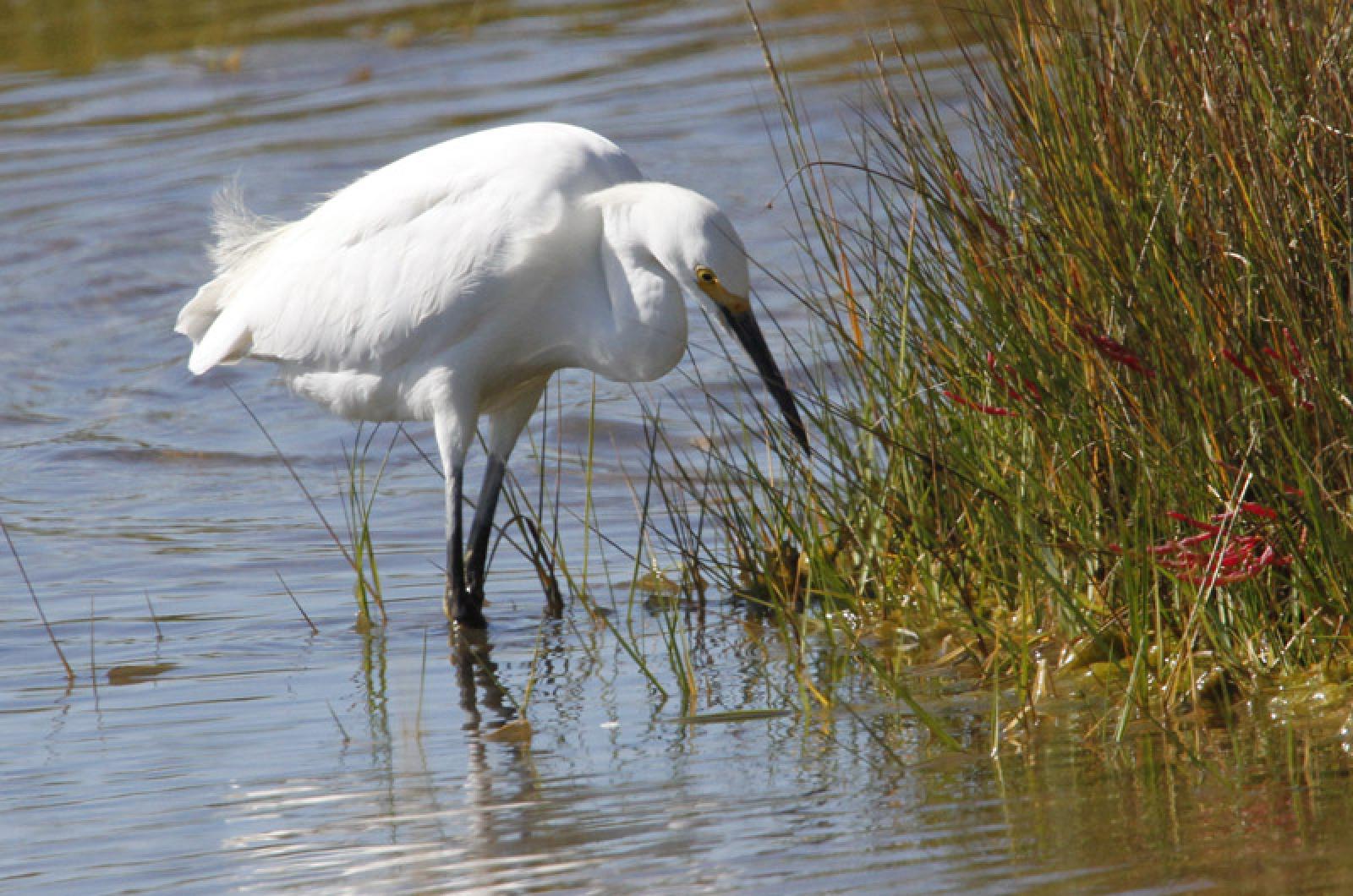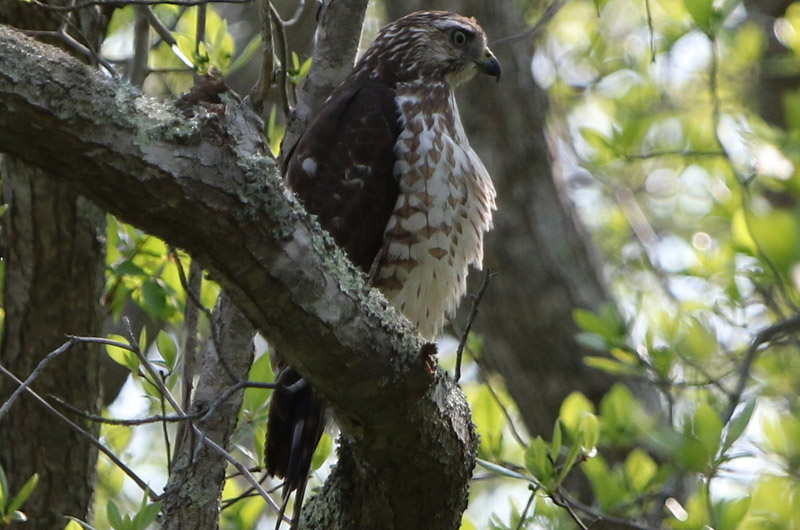Migration is winding down and our summer residents are all at the peak of their nesting season. In other words, there is still plenty of action in the birding world.
Lingering migrating shorebirds are still around, though they will be departing our shores pretty soon for their northern breeding grounds. Sam and Patty Wainwright found three red knots and a crowd of ruddy turnstones on Norton Point Beach on May 26. Lanny McDowell adds sanderling and lots of black-bellied plovers, dunlins and ruddy turnstones to that list. Jeff Bernier adds semipalmated sandpiper from Little Beach on May 29. And David Padulo found a ruddy turnstone, black-bellied plover and a laughing gull at Little Beach in Edgartown on May 30.
There are many shorebirds that breed here, and they are hard at home on our beaches. Jeff Bernier found the ever-popular black skimmers on both Little Beach and Norton Point Beach on May 29. My Saturday morning guided birding tours have found the other three species of terns nesting here: least, common and roseates. Ken Magnuson found the first-of-the-year great black-backed gull hatchlings on Sarson’s Island, and multiple observers report willets, American oystercatchers and piping plovers from many beaches.
Snowy egrets were a common sighting up through the 1980s, back when great egrets were still uncommon. Now great egrets are common while snowies are rare on the Vineyard. So a sighting of three snowies where the Mattakesset Herring Creek enters Mattakesset Bay is exciting. The egrets were observed by Mr. McDowell, Soo Whiting, Flip Harrington and Warren Woessner. Finding their breeding colony would be exciting.
On the migrating songbird front, Lanny McDowell reports a blue-headed vireo at Great Rock Bight on May 23 and a magnolia warbler at Tashmoo. That day Mr. Magnuson found a summer tanager at Menemsha Hills.
Allan Keith went to Squibnocket on May 25 and his highlights were Philadelphia vireo, willow flycatcher and both yellow-billed and black-billed cuckoos. Mr. Bernier spotted a chestnut-sided warbler (a first for him) in his yard that day. And Matt Pelikan heard seven blackpolls as he biked to work, and found a black-throated green warbler near his Lambert’s Cove Road office.
Pete Gilmore heard a black-billed cuckoo at Great Rock Bight on May 27, along with two blue-winged warblers that came close to him and allowed a clear views.
Two yellow-throated vireos have been present at Great Rock Bight from May 22 to at least May 27. Mr. Keith, Mr. McDowell and Mr. Magnuson were there to see the vireos on May 27 and observed a broad-winged hawk perching and then flying past. The vireo is not expected to nest here, but to be in one location for so long is not common in migration. The broad-winged hawk is expanding its range onto the Cape and could well be nesting on the Island. Let’s wait and see if it is seen again.
Mr. McDowell added a yellow-throated vireo, blue-winged warbler and black-throated green warbler on May 28. That day I heard and then saw a purple finch near the parking lot at Cedar Tree Neck, but it was not there the next day.
David Padulo found a Nashville warbler at Felix Neck on May 29.
There is a lot of news of resident landbirds as well. On May 27, Dan Townes found four “brancher” screech owls — they have left the nest cavity but may not yet be able to fly — and one of the parents all perched in the same tree. Most of us are lucky to find one of these owls in the daytime.
On May 29, Happy and Steve Spongberg report that they have a house wren hanging around their house, and that they heard and saw a scarlet tanager in Waskosim's Rock Reservation.
Terry Morrison reports that Baltimore orioles returned to her Tashmoo home on May 29. And I heard the first one in my yard on May 30. Why are these orioles returning so much later that all the others?
On May 29, Norma and Geoff Kontje found a ruby-throated hummingbird nest in their Chappaquiddick backyard. Several observers have commented that the hummers are less common at their feeders now. This is likely because half of them are incubating eggs now, and all of them are more focused on catching high-protein bugs instead of nectar.
Two nests of black-capped chickadees were photographed this week. Ellen O’Brien found one with eight eggs in one of Paul Jackson Sr.’s bird houses, and a nest with six eggs was found by Sioux Eagle. The nest was in a rotting 4x4 post.
Are fish crows breeding on the island? They were so abundant this past winter, yet we have not had any reports of one since Mr. Keith’s April 15 sighting at the Steamship Authority. So on May 28 I was birding with Carrie Fyler’s advanced placement biology class at the high school when we observed both a fish crow and an American crow flying away from us. I wonder if fish crows are so unusual now because they are mostly silent in the breeding season, and thus hard to identify?
And then there are lingering winter resident seabirds that ought to have left by now. Marston Clough reports that a male long-tailed duck is still hanging out in Lake Tashmoo, and has been there for the past two weeks or so. Penny Uhlendorf observed it off Hillman’s Point on May 24.
While razorbills are regularly found along our shores in the winter, their nearest nesting colony is in the Bay of Fundy. A few years back a pair of razorbills unexpectedly stayed in Menemsha Pond all summer. And now Soo Whiting reports that two immature razorbills were present in Menemsha Pond on May 29. Why are they still here? How long will they stay? Stay tuned.
Migration is nearly over and the nesting season is in full swing, so please get out looking for birds, and be sure to report your sightings to birds@mvgazette.com.
Robert Culbert leads Saturday morning Guided Birding Tours and is an ecological consultant living in Vineyard Haven.








Comments
Comment policy »